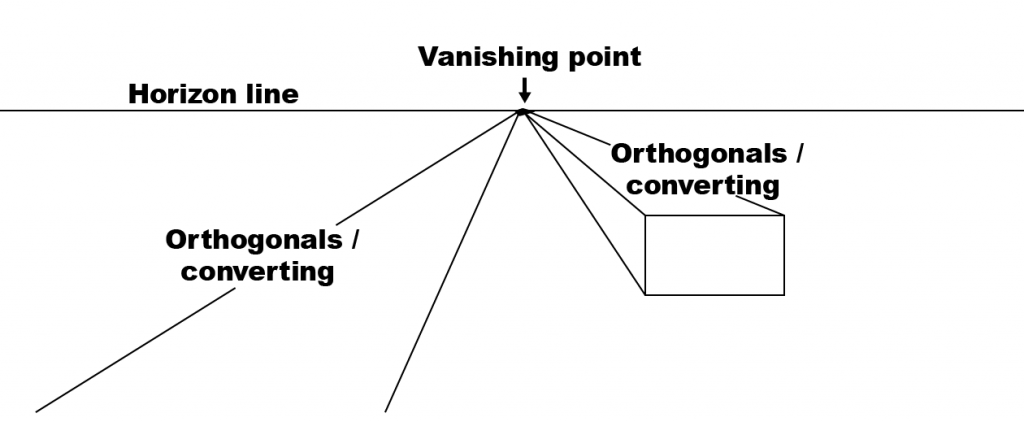What is Linear Perspective ?
Since the canvas has height and width, painting can described as two-dimensional activity. Objects around us is three-dimensional because they not only has height and width, but also depth. If so, than how do we portray 3-dimension or 2-dimension plane? This complicated task done using perspective.
During 14th to 16th century there were many advancement in various felids. One of the most important development in the field of Art was Linear Perspective. It uses the principle of math to realistically portray the space & depth in art. Renaissance artist’s concerned about their realistic paintings scenes. It is a reliable method that helped them accomplish realism. In another words, Linear or Point projection perspective is an approximate representation on flat surface of an image as it is seen by the eye. Feature of linear perspective is that object appears smaller as the distance increases giving depth to painting. They are subjective to foreshortening.
Using the linear Perspective method artists created the illusion of depth and space. Keeping in the mind the relative size and position of group of objects. To achieve this there are three essential components:
1. Orthogonal (known as converting /parallel lines)
2. Vanishing point
3. Horizon line.
Using above components, it is possible to arrange the composition in a way similar how the human eyes see. The principle of this technique is object that are closer to viewer appears bigger, object further away appears smaller. To accomplish that artist places a horizon line which is horizontal. Parallel / orthogonal they recede and meet at the vanishing point on horizon line. (see fig below)

Renaissance Masters of Perspective Drawing
- Leonardo da Vinci, who strove to create paintings that accurately resembled the real world. Proportion & Perspective used intensively.
- Jan van Eyck, a Netherlandish painter. Known figure of of the Early Northern Renaissance
- Donatello’s relief St. George Killing the Dragon (c. 1416–17)
- Masaccio’s painting The Holy Trinity (1425–27)
Andrea Mantegna (who also mastered the technique of foreshortening) - Leonardo da Vinci, and German artist Albrecht Dürer are considered some of the early masters of linear perspective
Perspective Drawing for kids
1. What is Linear Perspective? How and where to use it?
2. Introduction to some famous artists who perfected and incorporated linear perspective .
3. some famous works containing linear perspective.
Vocabulary children get familiar with:
Horizon line
Vanishing point
Orthogonal / parallel / converting
Renaissance period
What are type of Perspective?
One Point Perspective
Two Point Perspective
Atmospheric Perspective
Desire to create spatial depth in paintings and drawing, influenced the artists of many movements like Baroque Art, Neo classical Art and Post-impressionism to incorporate Linear perspective.
More on types of Perspective and art movements like Baroque Art, Neo classical Art and Post-impressionism we will be talking more about it in upcoming articles. Thanks for taking your time to read this post. We appreciate it!
